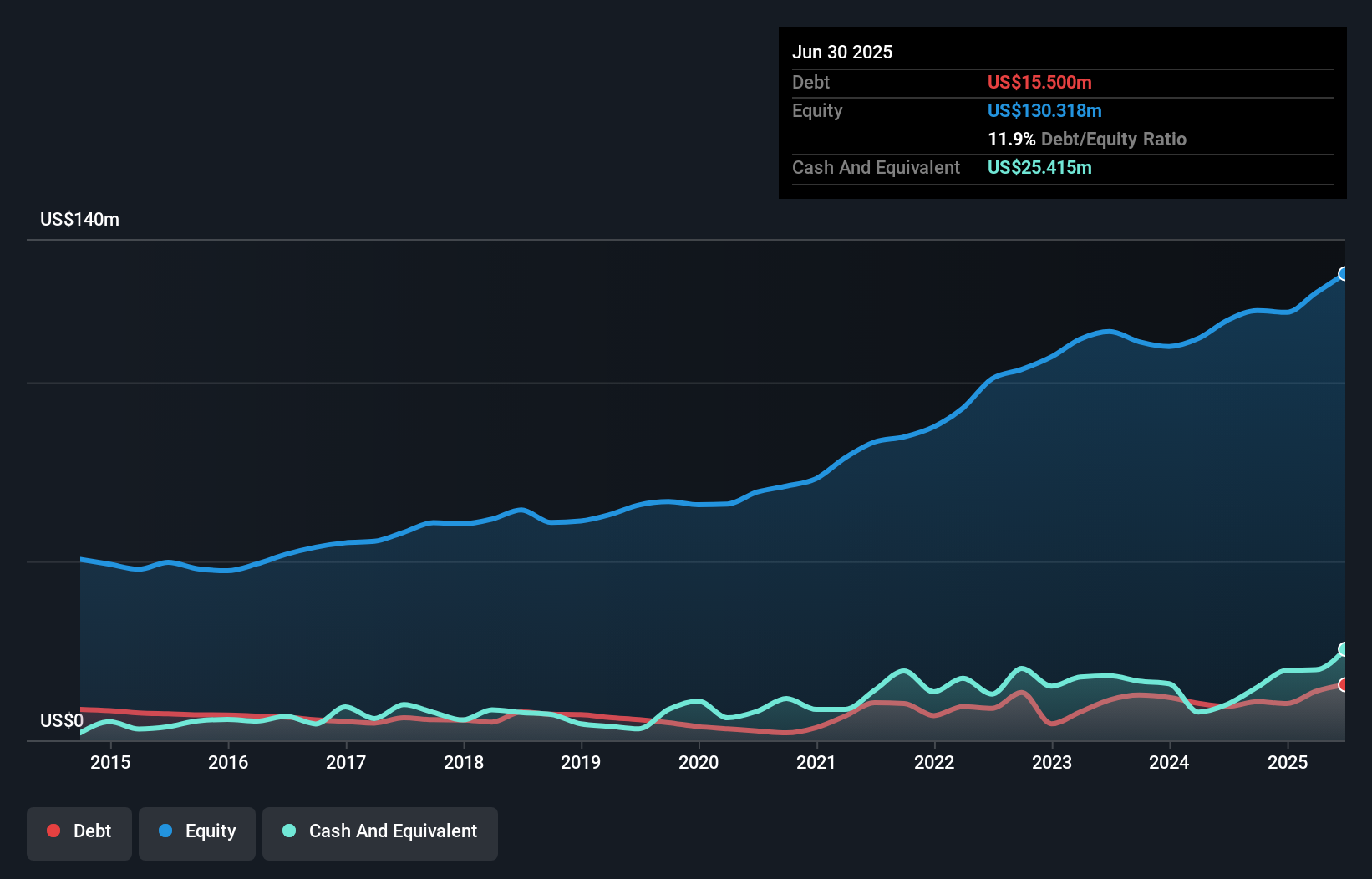- Canada
- /
- Metals and Mining
- /
- TSX:GEO
These 4 Measures Indicate That Geodrill (TSE:GEO) Is Using Debt Reasonably Well
Legendary fund manager Li Lu (who Charlie Munger backed) once said, 'The biggest investment risk is not the volatility of prices, but whether you will suffer a permanent loss of capital.' It's only natural to consider a company's balance sheet when you examine how risky it is, since debt is often involved when a business collapses. We can see that Geodrill Limited (TSE:GEO) does use debt in its business. But should shareholders be worried about its use of debt?
What Risk Does Debt Bring?
Generally speaking, debt only becomes a real problem when a company can't easily pay it off, either by raising capital or with its own cash flow. Part and parcel of capitalism is the process of 'creative destruction' where failed businesses are mercilessly liquidated by their bankers. While that is not too common, we often do see indebted companies permanently diluting shareholders because lenders force them to raise capital at a distressed price. Of course, the upside of debt is that it often represents cheap capital, especially when it replaces dilution in a company with the ability to reinvest at high rates of return. The first thing to do when considering how much debt a business uses is to look at its cash and debt together.
How Much Debt Does Geodrill Carry?
You can click the graphic below for the historical numbers, but it shows that as of June 2025 Geodrill had US$15.5m of debt, an increase on US$9.42m, over one year. However, it does have US$25.4m in cash offsetting this, leading to net cash of US$9.92m.

How Strong Is Geodrill's Balance Sheet?
The latest balance sheet data shows that Geodrill had liabilities of US$52.5m due within a year, and liabilities of US$6.80m falling due after that. Offsetting these obligations, it had cash of US$25.4m as well as receivables valued at US$52.3m due within 12 months. So it can boast US$18.4m more liquid assets than total liabilities.
This surplus suggests that Geodrill is using debt in a way that is appears to be both safe and conservative. Because it has plenty of assets, it is unlikely to have trouble with its lenders. Simply put, the fact that Geodrill has more cash than debt is arguably a good indication that it can manage its debt safely.
Check out our latest analysis for Geodrill
Better yet, Geodrill grew its EBIT by 161% last year, which is an impressive improvement. If maintained that growth will make the debt even more manageable in the years ahead. The balance sheet is clearly the area to focus on when you are analysing debt. But it is future earnings, more than anything, that will determine Geodrill's ability to maintain a healthy balance sheet going forward. So if you want to see what the professionals think, you might find this free report on analyst profit forecasts to be interesting.
But our final consideration is also important, because a company cannot pay debt with paper profits; it needs cold hard cash. Geodrill may have net cash on the balance sheet, but it is still interesting to look at how well the business converts its earnings before interest and tax (EBIT) to free cash flow, because that will influence both its need for, and its capacity to manage debt. Over the last three years, Geodrill reported free cash flow worth 8.7% of its EBIT, which is really quite low. That limp level of cash conversion undermines its ability to manage and pay down debt.
Summing Up
While we empathize with investors who find debt concerning, you should keep in mind that Geodrill has net cash of US$9.92m, as well as more liquid assets than liabilities. And it impressed us with its EBIT growth of 161% over the last year. So is Geodrill's debt a risk? It doesn't seem so to us. The balance sheet is clearly the area to focus on when you are analysing debt. However, not all investment risk resides within the balance sheet - far from it. For example - Geodrill has 1 warning sign we think you should be aware of.
At the end of the day, it's often better to focus on companies that are free from net debt. You can access our special list of such companies (all with a track record of profit growth). It's free.
New: Manage All Your Stock Portfolios in One Place
We've created the ultimate portfolio companion for stock investors, and it's free.
• Connect an unlimited number of Portfolios and see your total in one currency
• Be alerted to new Warning Signs or Risks via email or mobile
• Track the Fair Value of your stocks
Have feedback on this article? Concerned about the content? Get in touch with us directly. Alternatively, email editorial-team (at) simplywallst.com.
This article by Simply Wall St is general in nature. We provide commentary based on historical data and analyst forecasts only using an unbiased methodology and our articles are not intended to be financial advice. It does not constitute a recommendation to buy or sell any stock, and does not take account of your objectives, or your financial situation. We aim to bring you long-term focused analysis driven by fundamental data. Note that our analysis may not factor in the latest price-sensitive company announcements or qualitative material. Simply Wall St has no position in any stocks mentioned.
About TSX:GEO
Geodrill
Provides mineral exploration drilling services to the mining companies in West Africa, Egypt, Chile, and Peru.
Undervalued with excellent balance sheet.
Similar Companies
Market Insights
Community Narratives



